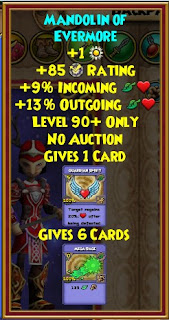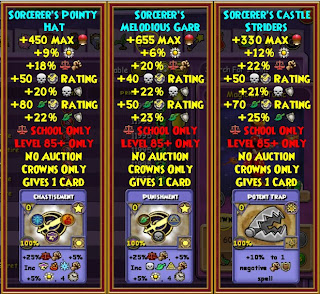
I do not know Nanniexttanyspj. That username is already very odd. Who would spell their own username that way? And she only tweeted a simple shortened url? Shortened urls can hide an unsafe website address. That should send the bells ringing.. VERY LOUDLY.
People are worried about their accounts' safety especially when you see tweets or posts that you never made being posted by your own account. Do not freak out.
Here's a simple step by step progress that you have to do to find the problem:
1) Change your password.
If that doesn't stop it, continue to #2. If this does stop it, it means your account is vulnerable to hackers. But, do not fret. Just make sure your account password is changed often and do NOT click on other people's spam links like "Do you wanna lose weight?"
2) Revoke all of the 3rd party access apps that you do not trust. Check your Twitter or Facebook's Third Party applications under Settings. Make sure there's no naughty Third Party applications sending out tweets without you knowing.
If that doesn't stop it, continue to #3. If this does stop it, it means that you have to be careful of third party applications you accept to tweet or post on your behalf. Keep an close eye on them.
3) If you use any third party applications that has access to Twitter and Facebook, change their passwords. For example, Hootsuite helps you sends tweets or posts to Twitter, Facebook, etc. You must change Hootsuite's password just in case.
If that doesn't stop it, continue to #4. If this does stop it, ensure all of your third party applications' passwords are changed often. Do NOT click on any strange spam links while using that application.
4) Make sure you are on a secure network if you are using WiFi.
If that doesn't stop it, continue to #5. If this does stop it, ensure that your computer is on a secure network at all times as well as your other computers in the household.
5) Make sure your computer updates has been installed. Especially the security features.
If that doesn't stop it, continue to #5. If this does stop it, make sure your computer is updated at all times, especially the critical and security features.
5) Scan your computer for malware and/or viruses.
If that doesn't stop it, continue to #6. If this does stop it, make sure your computer is often scanned for malware and/or viruses. Do not download anything strange or untrustworthy which can bring malware or viruses onto your computer. If you cannot afford an expensive virusware, go to AVGFree which won't break the bank. It's FREE! http://www.avg.com/us-en/free-antivirus-download
6) Scan your computer for malware and/or viruses.
If this doesn't stop it, you might have to consult a computer professional about this. If this does stop it, make sure your computer is often scanned for malware and/or viruses. Do not download anything strange or untrustworthy which can bring malware or viruses onto your computer.
Doing them in those steps will show you where the problem truly lies, so you are aware where you are most vulnerable. But at whatever step you are at, please make sure you're on a secure network and scan your computer for viruses and malware as well as make sure your computer is up to date.
The Safety Measures For Your Account & Computer:
-Always make sure your computer is completely updated at all times.
-Do NOT click on any links that are obviously a spam such as "Want to lose weight?", "FYI this person said rude things about you" or even ones with just a name and a link without them saying actual things. It also applies to Twitter's Direct Messages or FB emails.
-Also if you are using WiFi, please make sure it is on a SECURE network. Unsecured networks can let hackers get to your computer which is very unsafe.
-Make sure your Twitter page and Facebook Wall is clean of spam to prevent your friends from accidentally getting "infected." They might think it's real and click on them. :(
-If you are friends with the infected account, simply let them know that they have been an victim of unwanted bot spam. If you are not, simply report them for spam.
-If in doubt, simply reply and ask the person if it's a real link before clicking.
-When visiting a link, always check the website address to make sure it's safe. If you are purchasing something on a site, make sure it has a "httpS://" at the very beginning. S means Secure. Also make sure the social networks have S in the "https://" as well. Do NOT access any social site without a S in the "https://" because that means you are going in an unsecured site which is not safe.
-Update your passwords frequently. Make sure it has numbers and that it certainly is a very hard one to crack. No birthdays or no names and try to make it one that doesn't even relate to you at all.
Here's an article about the top worst passwords of 2012. Check to make sure yours is not one of them. http://www.cnn.com/2012/10/25/tech/web/worst-passwords-2012/index.html
LINKS TO BOOKMARK:
Twitter - For more general information:
For more information about compromised accounts:
To edit your third party apps' permissions:
To report your account being a victim:
Facebook - For more general information:
To edit Third Party Apps:
Look under your Account tab, click on "Privacy Settings" & find the "Apps and Websites" settings management tool. You can remove or edit the permissions there. Also go to: https://www.facebook.com/settings/?tab=applications.
To report your account being a victim:
Email Facebook at: privacy@facebook.com
or go to: https://www.facebook.com/help/
Even Pinterest is having problems with spam that is spilling into Facebook. So be aware that whatever you do on Facebook can affect Twitter like Pinterest affecting Facebook. So be safe on ALL social platforms that you use. Even Pinterest! Don't believe me, check out the article below.
TheNextWeb article about Pinterest spam spilling onto Facebook:
Pinterest - For more general information:
To report Spam or something that is offensive to you:
Good Luck!
























.JPG)
.JPG)
.JPG)
.JPG)
.JPG)
.JPG)
.JPG)
.JPG)
.JPG)
.JPG)
.JPG)
.JPG)
.JPG)
.JPG)



























